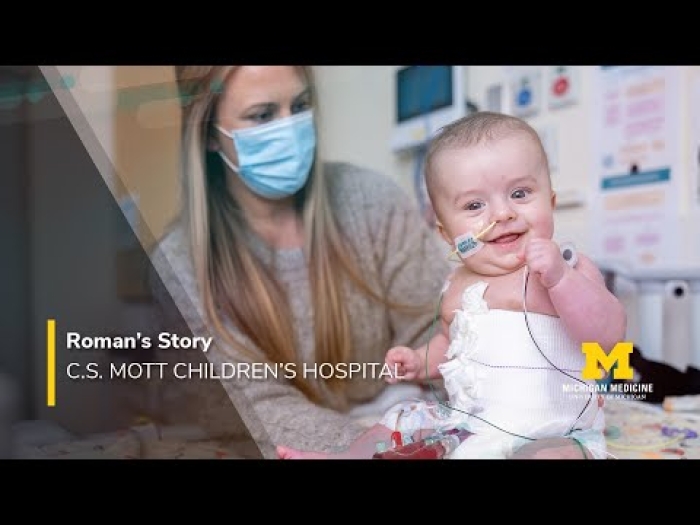The United States Renal Data System’s annual data peport highlights key data and trends for kidney disease in 2018
Author |
The United States Renal (Kidney) Data System (USRDS) has just released its Annual Data Report (ADR) for 2018 on the state of kidney disease for the country. The report is prepared by the USRDS Coordinating Center based at the University of Michigan’s Kidney Epidemiology and Cost Center in partnership with Arbor Research Collaborative for Health.
The USRDS remains the most comprehensive resource for those seeking detailed information, data and trends on a wide variety of kidney disease topics. The report is entirely web based www.usrds.org, and is also regularly published in the American Journal of Kidney Diseases.
The report highlights the fact that American rates for kidney failure that require dialysis or kidney transplantation (referred to as End-Stage Renal Disease – ESRD) rank among the highest in the world and continue to rise. Additionally, there are many ‘hot spots’ of the condition around the country as highlighted in the maps and tables contained in the report.
The prevalence of earlier stages of CKD among adults remains just under 15 percent, indicating that over 30 million Americans may have the disease, with millions of others at great risk. This is due to the high prevalence of risk factors to the disease, including diabetes, hypertension, obesity, cardiovascular disease and other conditions.
One of the early chapters in the report takes a deeper look into “awareness” of kidney disease among individuals with CKD. Awareness indicates that an individual has been informed about having the condition. By comparing these figures over time, researchers found little to no improvement in the percentage of individuals with CKD who were aware of their disease in its earlier stages. However, individuals in the later stages of their CKD reported increased levels of awareness, growing from 36 to 57 percent in more recent years.
Even among individuals with hypertension and diabetes, only 15 percent who had the condition (based on laboratory tests) were aware of their kidney disease. Overall, awareness rates were higher among older individuals, yet only 10 percent of individuals aged 60 (or above) who had the disease knew they had it.
Additionally, the report shows that the prevalence of self-reported CKD – spurred by awareness of the diagnosis – in the U.S. population is extremely low. The reported numbers ranged from 1.8 percent in Wyoming to 4.0 percent in Mississippi. Given that the overall prevalence of CKD in the U.S. is closer to 15 percent, these numbers highlight extremely low awareness about the disease.
“More often than not, kidney disease is silent until its very late stages,” says Rajiv Saran, M.D., professor of internal medicine at the University of Michigan and director of the USRDS coordinating center. “There are many missed opportunities for its potential early detection and subsequent treatment implementation. For example, the relatively low testing rates for urine protein even among those with diabetes or hypertension – both well-known risk factors for kidney disease – remains a concern.”
Saran acknowledges that this is why sharing awareness about the disease and its risk factors is so important, as it can not only help prevent kidney failure, but also many other life-threatening illnesses that occur at higher rates among individuals with kidney disease.
Among both patients with CKD and those with ESRD on dialysis, the ADR reports a falling trend in hospitalization rates. While this trend is encouraging, it is opposed by rising emergency room visits and short-term observation stays for dialysis patients.
In the case of CKD, the recorded rates of hospitalization in older patients were greater than the younger cohorts, and black patients with CKD had higher adjusted rates than their white counterparts. These trends, and their geographic variations, are incredibly important for health care policy and planning.
Other important highlights from the ADR include:
- Mortality rates for patients on dialysis are decreasing but have recently plateaued.
- The death rates among patients on dialysis are no longer decreasing. This aspect deserves greater attention by practitioners, policy makers and researchers.
- The transition from CKD to ESRD is traceable. The vast majority (i.e. 80 percent) of new patients on dialysis continue to initiate dialysis with a catheter, a practice that has changed little over time, and one where concerted efforts to improve care are necessary to help improve patient outcomes.
- Low levels of home dialysis therapies (i.e. peritoneal dialysis and home hemodialysis) in the U.S. are significant. While on the rise worldwide, home dialysis therapies remain low in the U.S. when compared to many other countries.
- Kidney disease is expensive. The total Medicare spending on both CKD and ESRD patients was in excess of 114 billion dollars. Accompanying chronic diseases such as diabetes and heart failure compound the cost of caring for these individuals and kidney disease has been deemed a “cost multiplier” for this reason. Substantial cost savings may result if these conditions are detected and treated early, therefore preventing further complications.
- There is encouraging news on kidney disease among diabetics. The prevalence of kidney disease among individuals with diabetes decreased from 43.6 percent to 36 percent over the last two decades. However, the same trend has not been observed among individuals with kidney disease and hypertension.
- Acute kidney injury is a major risk factor for chronic kidney disease, decreased mortality rates and higher institutionalization rates among older Medicare recipients. Hospitalizations for acute kidney injuries among individuals of all ages is associated with an increased chance of being diagnosed with chronic kidney disease in the year following hospital discharge.
Authors: In addition to Saran, the report's U-M authors include Bruce Robinson, M.D., Vahakn Shahinian, M.D., John Ayanian, M.D., Nicole Bhave, M.D., Jennifer Bragg-Gresham, Ph.D., Debbie Gipson, M.D., Kevin He, Ph.D., William Herman, M.D., Michael Heung, M.D., Richard A. Hirth, Ph.D., David Hutton, Ph.D., Hal Morgenstern, Ph.D., Zubin Modi, M.D., Brahmajee Nallamothu, M.D., Ronald Pisoni, Ph.D., Douglas E. Schaubel, Ph.D., David T. Selewski, M.D., and Kenneth J. Woodside, M.D.
Funding: Funding for the project came from the National Institute of Diabetes and Digestive and Kidney Diseases, National Institutes of Health, and the U.S. Department of Health and Human Services, under contract HHSN276201400001C, and the USRDS Coordinating Center Team, which consists of investigators and staff from the University of Michigan Health System, the Kidney Epidemiology and Cost Center, in partnership with Arbor Research Collaborative for Health.
Disclosure: Dr. Hal Morgenstern is a consultant at Arbor Research Collaborative for Health. Dr. William Herman is the Chair of Data Safety Monitoring Board for Merck Sharp & Dohme
Reference: United States Renal Data System. 2018 USRDS annual data report: Epidemiology of kidney disease in the United States. National Institutes of Health. National Institute of Diabetes and Digestive and Kidney Disease, Bethesda, MD, 2018. http://www.usrds.org/adr.aspx

Department of Communication at Michigan Medicine





